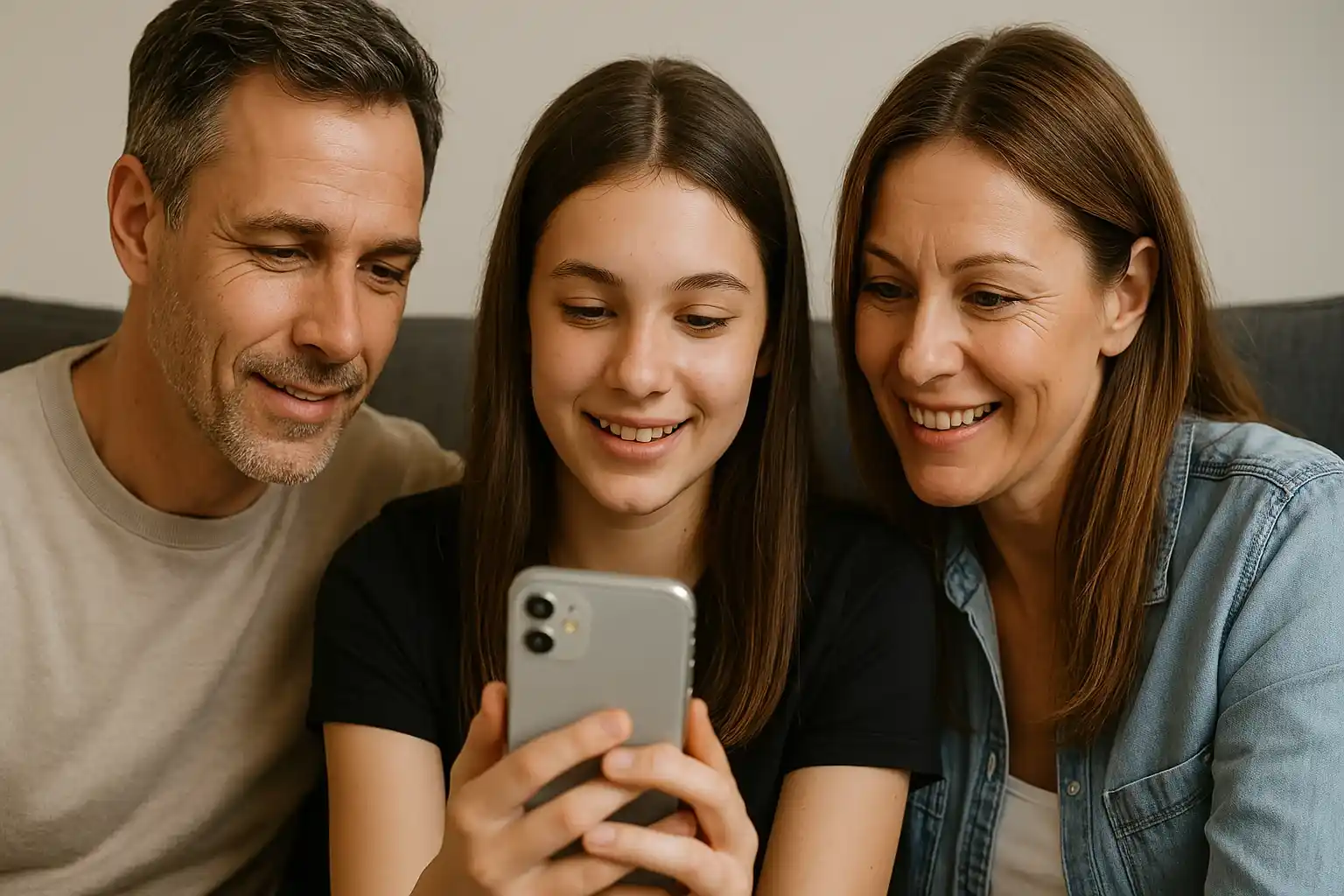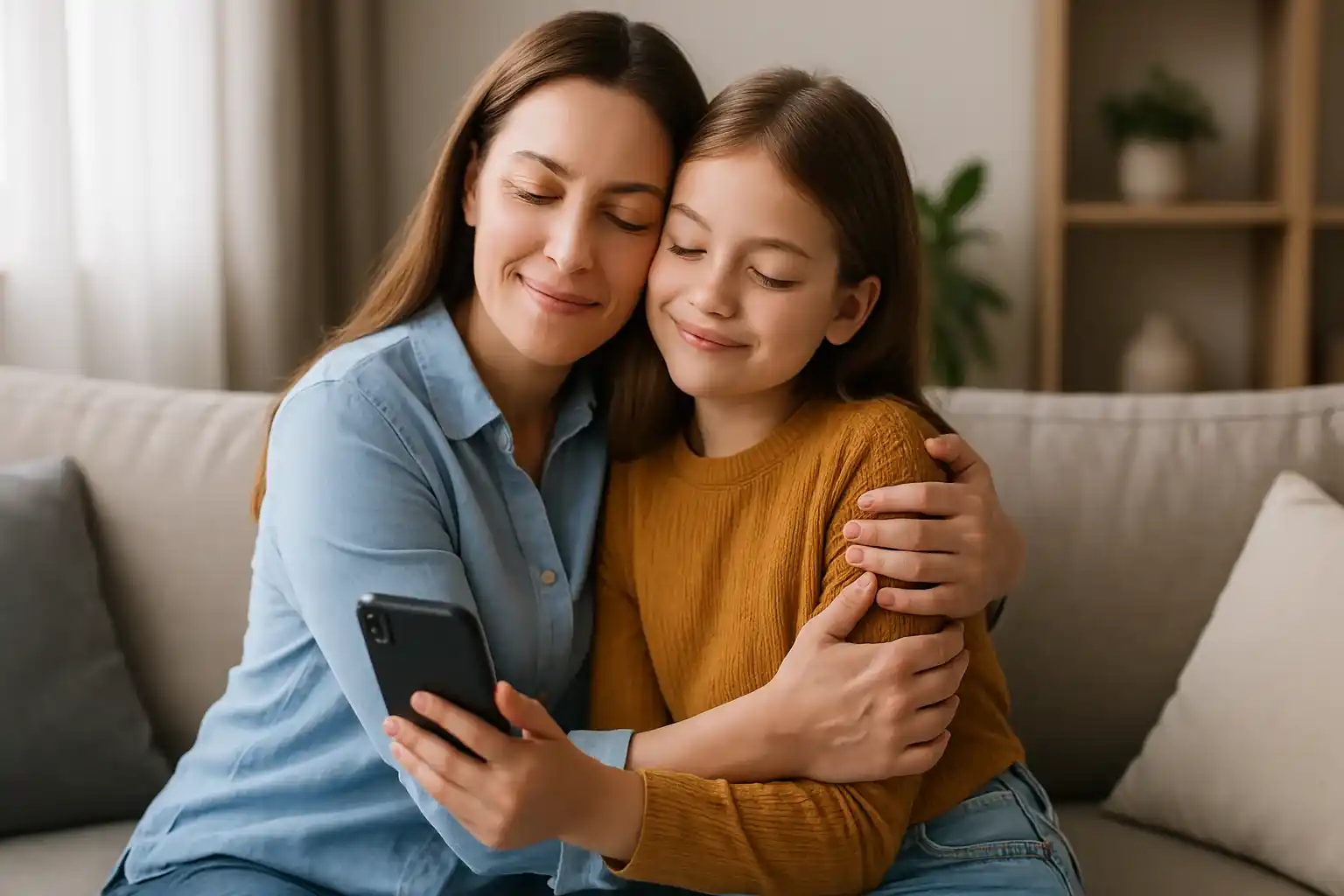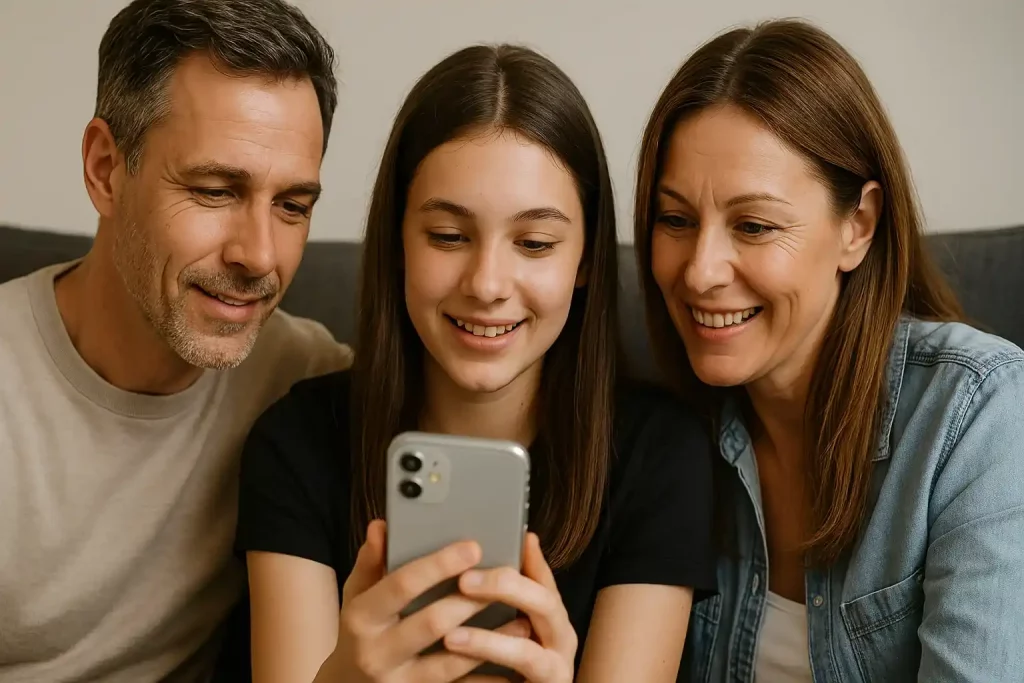Today’s teenagers live in two realities at once – online and offline. They communicate on social networks, watch videos, meet friends, go to clubs and drive around town. It’s a freedom we once only dreamed of having – and one that simultaneously scares us parents.
After all, how to know if your child is okay if they are not online or do not respond? How do we know he’s really at practice and not somewhere else? Is it possible to track my kids phone – without breaking trust, without becoming a total controller, but just to be calm?
The answer is “yes”, you can. The digital world today provides us with smart solutions to help when it really matters. So today – no panic, bans or moralizing. Just practical advice, real-world tools, and an honest conversation about how to keep your teen safe without destroying the relationship.
Online — Where Independence Begins and Risks Appear
- Social Media: Privacy Without Panic
Instagram. TikTok. Snapchat. For teenagers these platforms are not just social networks – they are arenas of self-expression, experimentation, and sometimes, pressure. According to Pew Research (2023), 59% of teens say they’ve felt pressure to look “cool” on social media.
Thus, what should you do with this information? Well, rather than ban all social networks, you can help your teen understand how to use them wisely. For example, walk through privacy settings together: who can comment, who can message, and how content visibility works. Then help them build a “smart profile” – one that still feels authentic, but doesn’t overshare.
Tip: Set social platforms to private by default, and discuss why “less visible” does not mean “less fun.” Teens often respond better to logic than strict rules or obligations.

- Anti-Bullying Filters and Non-Invasive Monitoring
Of course, you weren’t born yesterday, so it’s no secret to you that teen-to-teen cruelty has moved online. Bullying, pressure, and exclusion can now happen silently, through comments, DMs, or exclusion from chats. And these are all things that every parent wants to keep their child safe from.
So, here you can rely on technology: apps like Bark and SafeToNet are designed to monitor for signs of distress (mentions of self-harm, aggression, or harassment) without giving you full access to every conversation. Thus, due to them you will be able to strike a rare balance: insight for the parent, space for the teen. Moreover, this lets you respond early – not after the damage is done but still respects the boundary between awareness and surveillance.
Lifehack: Position such tools as a family-wide solution – not just something “imposed on the child,” but a way everyone agrees to be safer online.
- Built-in Parental Controls: Use What’s Already There
Do you know that both Apple and Google offer advanced, built-in parental controls features. These include app usage limits, content filters, and download approvals. And that is great. But many parents overlook one powerful feature: activity alerts.
So, here you may enable notifications for app installs, location changes, or device reboots to keep track of digital behavior without needing to read every message or take away the phone.
Hack: Turn screen time monitoring into a weekly check-in with your teen. Ask what worked, what didn’t – and adjust the limits together. And remember if you give your child some freedom to act, then you get back more respect and increased compliance.
Movement, Meetings, and Real-Life Safety
While online risks grab most of the headlines, the offline world remains just as challenging for today’s teens. The independence of your teen in the real world is growing, from figuring out how to get to a friend’s house to meeting someone new in their social circle. The challenge for parents is not to limit this freedom, but to support it – with smart, non-invasive technology that keeps them safe without taking away independence. So, please refer to the table below to see the most appropriate way for your family.
| Monitoring method | Functionality | Advantages | Interesting Fact / Tip |
| Geofencing and location sharing | Define safe zones (e.g. school, friend’s house) and receive automatic alerts when entering or leaving | Silent updates, builds trust, easy to manage together with your teen | Let teens choose their own safe zones – increases cooperation and ownership |
| Number Tracker app | Allows real-time location sharing, routs sharing, creating a personal circles, using build-in AI assistant | Reliable and advanced tool for family safety, just see, track, receive notifications and gain a peace of mind. | Use as a “Plan B” for situations like new places or solo travel – not for everyday tracking |
| SOS Gadgets and smart accessories | Wearable devices send an SOS alert and live location to a trusted contact with a single press | Stylish and compact, quick response in emergencies, suitable for various ages | Teens are more likely to wear safety tech if it looks cool or feels personal |
Insight for a parent: Ask your teen which tool they’d be most comfortable with – when they help choose the method, they’re more likely to actually use it.
Talking Tech and Trust With Your Teen
You can have the best tools, the latest gadgets, and a perfectly optimized parental dashboard – but without open communication, none of it really works. Remember the main rule: technology is only as powerful as the conversations it supports. And when it comes to parenting teens, how you talk matters more than actually what you say.
“I’m Watching You” vs. “I’m Here for You”
The words you use can define the entire tone of your relationship. A teen who hears “I trust you, I just want to know you are okay” is more likely to open up than one who hears “I am monitoring everything.”
Thus, rather than dropping surprise tracking apps or locking down their phone, try framing safety tools as shared resources. For example, instead of saying “I’m installing this because I don’t trust your decisions,” you may say: “I’d feel more comfortable knowing we have a way to stay connected if something unexpected happens.” Teens are highly sensitive to control but still deeply responsive to honesty.
And please take a note that rigid rules without flexibility often lead to rebellion. So, think about co-creation of a digital hygiene regimen with your teen. That means agreeing on phone-free zones (like dinner time or bedtime), setting quiet hours for apps, and talking about screen time goals, not punishments.When they are part of the process, they’re far more likely to respect the boundaries – because they helped shape them.
Hack: Use a shared calendar app (like Google Calendar) to block digital detox time for the whole family. It feels fair, not punitive.

Balance Support and Autonomy
As your teen grows, their need for privacy and independence grows, too. And that’s a good thing. Here you should not fully remove safety nets, but to make them optional, accessible, and non-invasive. You are not stepping back, you are stepping aside, slightly, so they can learn to walk their own path, with confidence that someone’s nearby.
Stat Insight: According to a 2022 Common Sense Media survey, teens who feel “trusted and respected” by their parents are 68% more likely to share concerns or ask for help online.
Here it goes not about surveillance, but about trust-building. And sometimes, just knowing there’s a Number Tracker, a safe zone, or a shared app running quietly in the background is all they (and you) need.
Be a Guide, Not a Spy
Teen safety doesn’t mean wrapping your child in bubble wrap or forcing constant check-ins. It means you both will use the right tools, in the right way, at the right moments – and all this along with empathy, trust, and collaboration. The goal isn’t control but a connection. And that’s the safest path of all.







